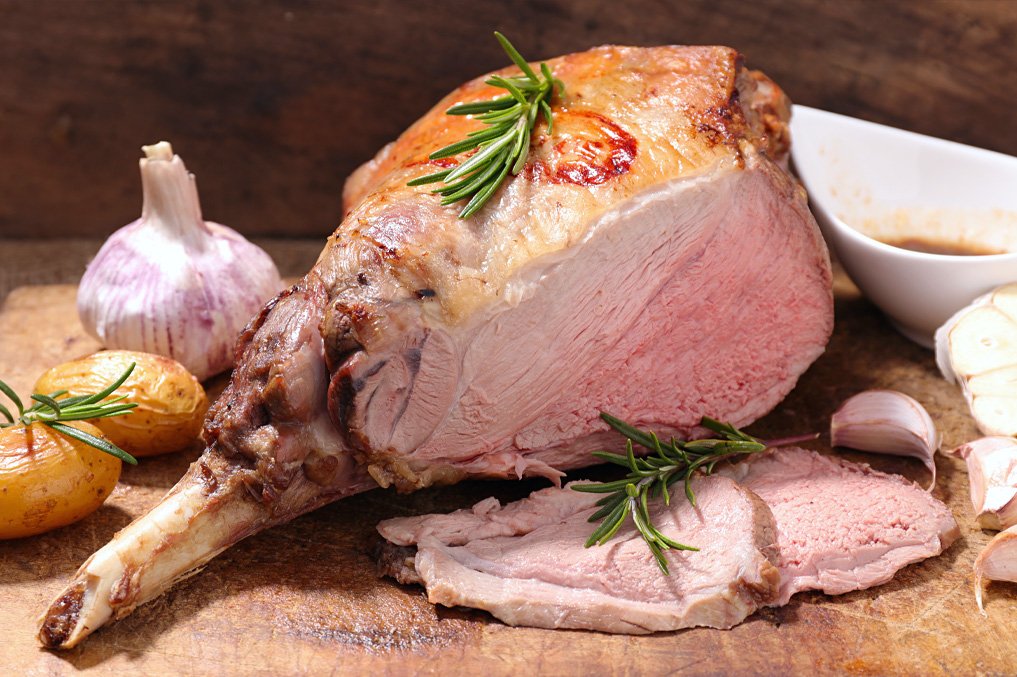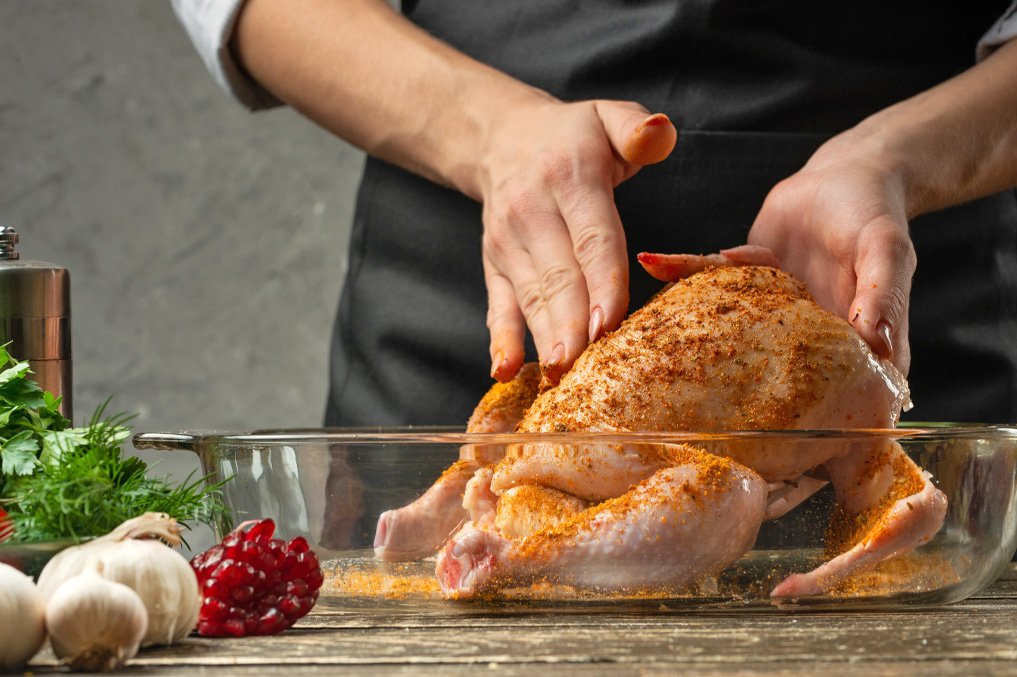Gravette’s Summer Grilling Guide
Nothing says “summer” more than firing up the grill, so I’ve put together this brief grilling guide. It would be impossible to include everything you might need to know in this short blog post, but I’ve given you the basics and some direction as to where you can find additional information. From the right equipment to recipes and flavor boosters, you’ll be eating extraordinarily well this summer and beyond!
Grills
When deciding on a grill, think about how often you'll be grilling, the amount of space you have for storage, what flavors you prefer and the amount of time and attention you'll want to spend cooking.
Here are some basics on each type:
Gas – the most common type. They offer excellent heat control, ignite with the push of a button, heat up quickly and are easy to clean. The go-to choice for folks who plan to barbecue frequently.
Charcoal – require briquettes or lump charcoal to ignite. Charcoal takes time to heat up and cool down, but it imparts a better, smokier flavor than gas.
Kamado – uses charcoal to heat but is often made of ceramic, with thicker walls than charcoal grills. They can reach very hot temperatures and retain heat well for low-and-slow smokes.
Electric – can't be beat for ease-of-use or convenience. Many can be used indoors or at apartment complexes that don't allow charcoal or gas grills. Just don't expect your food to taste like it was cooked on a real BBQ.
Pellet – a growing category that uses electricity and hardwood pellets made from wood scraps to heat. Pellets provide a delicious, authentic hardwood flavor to food.
Tools
Tongs
Size: It really comes down to the size of your grill (keep your hands and forearms away from the intense heat!) and what feels right. Try 12- or 16-inches for versatility.
Handle Material: Silicone grips are comfortable, easy to grasp, and they stay cool to the touch.
Tip Material: Metal is better for high heat and allows for more precision. Silicone is better for nonstick or enameled cast iron that might be prone to scratching.
More to Consider: Try to find tongs with a locking mechanism, easy resistance, a storage ring, and scalloped edges.
Grill Brush
Metal Bristles: Heavy duty and can handle hot temperatures. They can also scratch coated grill grates.
Nylon Bristles: Don't clean as well or as quickly as metal bristles, and can't be used over high heat, but they’re gentler than metal and won’t scratch your grate.
Bristle-Free Brushes: Don't get around grates like bristles do, but they're typically strong, resilient, and good at scraping.
Rounded Bristles: Offer a more comprehensive clean. Horizontal heads covered more surface area at once while vertical ones tended to get deeper into grates.
In addition, you may want to consider a meat thermometer, skewers, a grill basket or pan, a basting pot and brush, and perhaps a burger press. Any or all of these will make your grilling easier and better.
Cooking Tips
Alright, you have the grill and the utensils. Now what? You can’t simply slap something on the grill and hope for success. How hot should the grill be? How long do you grill it? And when it’s “done,” then what? This should answer those important questions.
Meat & Poultry
Did you know that meat continues to cook after it’s removed from the grill? So, when you take a steak, roast, or chop off the grill, place steaks, put it on a plate or cutting board, cover it with foil, and let it “rest” for 5-10 minutes before you serve it. This helps seal in the juices and flavor.
To sear steaks or chops, coat the meat lightly with vegetable oil before putting it on the grill. High, direct heat will sear the surface, locking in juices and intensifying flavor.
Grill burgers or chops for 60% of the time on the first side, then flip and grill the last 40% of the time on the second side.
Maintain an even grill temperature by keeping the grill lid closed.
Beef & Veal
Rare: 120 - 130°F (Cool Red Center)
Medium Rare: 130 - 135°F (Warm Red Center)
Medium: 135 - 145°F (Warm Pink Center)
Medium Well: 145 - 155°F (Slightly Pink Center)
Well Done: 155 - 165°F (Little to No Pink)
Poultry
Cook poultry to an internal temperature of at least 165°F. Poultry is cooked and safe to eat when the meat is no longer pink and the juices run clear.
Pork
Medium Rare: 145 - 150°F
Medium: 150 - 155°F
Medium Well: 125 - 160°F
Well Done: 160°F
Lamb
Rare: 120 - 130°F (Very Red)
Medium Rare: 130 - 140°F (Lighter Red)
Medium: 140 - 150°F (Pink Red)
Well Done: 150 - 165°F (Little or No Pink)
Seafood
Preheat charcoal grill for 30 minutes or gas grill 10 minutes on high with the lid closed. Make sure grill grates are positioned 4-6 inches away from the heat.
Fish is not as fatty as beef or chicken. To prevent it from sticking to the grates, brush them generously with oil to prevent sticking. Then place the fish skin-side down on the grates.
If you’re cooking fish directly over the heat, cook it 4-6 minutes per side, per inch of thickness, over a medium-high (350 - 375°F) heat.
If you’re using indirect heat, place charcoal on only one side of the grill, or ignite the burners on only one side. Place the fish on the grates over the cooler side and cook for 15 minutes with the lid closed.
For thicker cuts of fish, like swordfish, tuna, and salmon, grill them directly on the grate. For more slender cuts – tilapia, sole, flounder – place them inside a grill basket, on a perforated grill pan, or in a foil envelope.
You can turn practically any fish or seafood into an entire meal (minus dessert, of course!) by serving it over a delicious side dish like confetti corn, rice pilaf, mixed greens, pasta scampi or stir-fried vegetables!
Great Grillin’ Recipes
As far as recipes go, you could spend your entire summer just reading the recipes from online sites! To give them to you here would take up all this space and more. To get you started, here are a few links to sites providing recipes for practically anything you may want to put on the grill. Just looking at the accompanying pics will make your mouth water!
50 Grilling Recipes for Summer
By Sylvia Fountaine
33 Best Grilling Recipes on the Planet
By Mura Dominko
100 Best Grilling Recipes You Have to Try
By Molly Jasinski
Flavor Enhancers
Sauces
What’s your preference? Whether you go for spicy, sweet, smoky, mustard, vinegar, Korean, or chipotle, the sauce can be what turns great grilling into awesome grilling.
Gravette Recommends:
Bachan’s Japanese Barbecue Sauce
The most authentic Japanese Barbecue Sauce available outside of Japan, Bachan’s small batch barbecue sauce is cold-filled, Non-GMO Certified, and preservative free–using only the highest quality Japanese ingredients.
Marinades
How long you marinate depends on what you’re marinating. Non-acidic marinades, stick to a maximum of 24 hours. You can leave them longer, but this won’t make them work any better. Don’t leave meats to marinate in an acidic marinade for longer than overnight. As a rule, about 5-6 hours is best for texture and flavor. Although, even 10 minutes of marinating will still add some terrific flavor.
Gravette Recommends:
Big Kahuna Pineapple Teriyaki
Lei on the flavor with the Big Kahuna Pineapple Teriyaki. This sweet and tangy huli huli sauce will add onolicious flavor to all your favorites.
Rubs
A dry rub is the base for infusing flavor in your BBQ, and a versatile additive grilling tool. It needs to compliment the natural taste of the meat or veggie that you’re grilling or smoking, while adding its own flavor or even taking it in a whole new direction.
Gravette Recommends:
Gustus Vitae Montreal Steak Seasoning
Montreal Steak Seasoning's charms aren't limited to just red meat. Far from it - from enlivening roast potatoes, to spicing up veggies on the BBQ, to making your simple side salad sing.
















